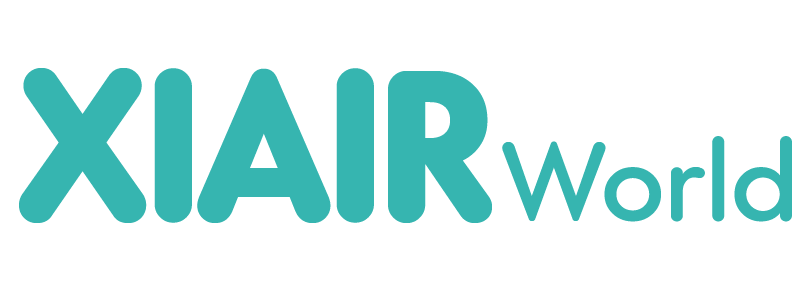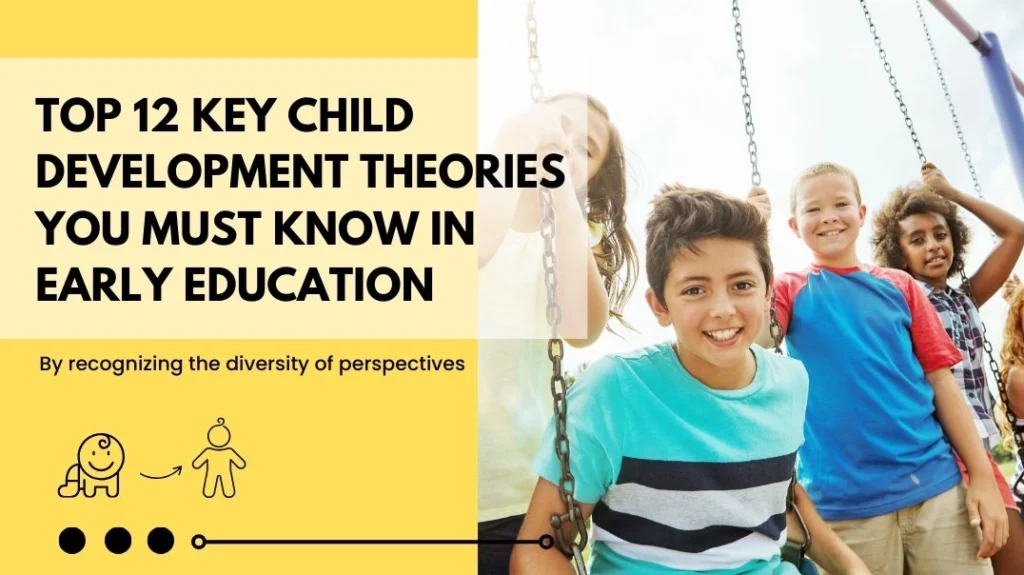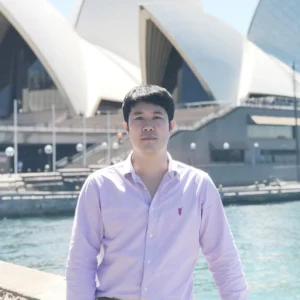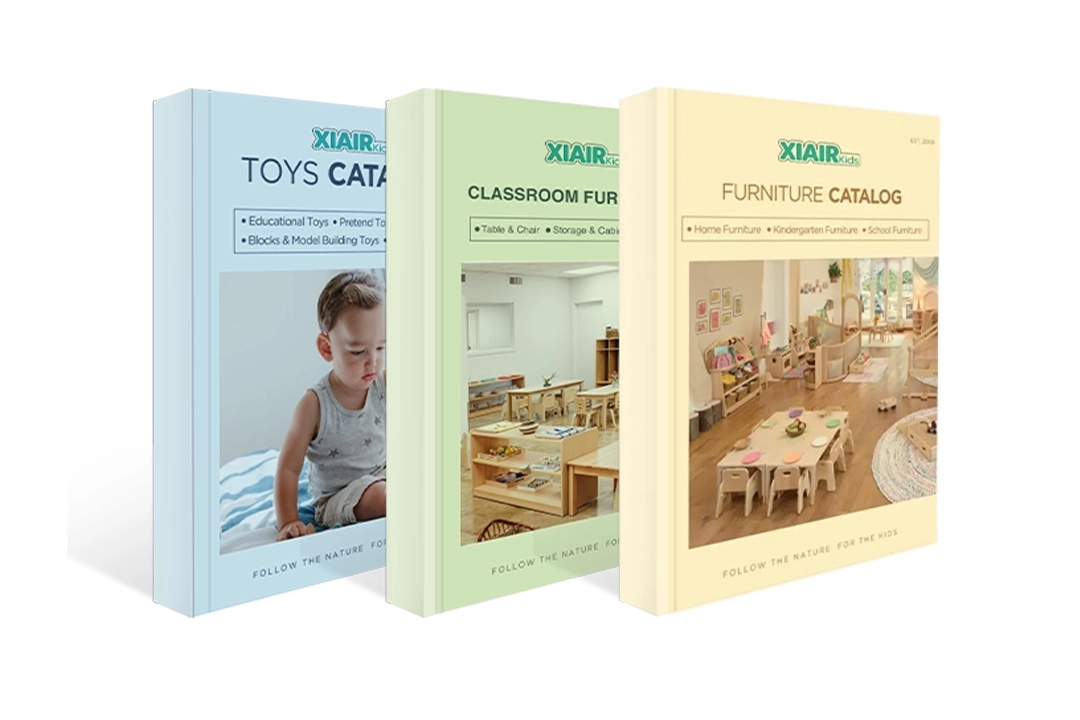Child Development Theories help explain how young children grow, learn, and interact with the world around them. These theories are especially valuable in early education, where every stage of development matters.
They help teachers, parents, and caregivers better understand what children need emotionally, socially, and cognitively at different stages of development. This knowledge helps create age-appropriate lessons, guide behavior, and support every child’s unique growth path.
For example, theories by Jean Piaget, Lev Vygotsky, Maria Montessori, Erik Erikson, and Bowlby each offer different views on learning and development. These theories also influence how we design classrooms, choose toys, set routines, and respond to children’s behavior—especially in preschool and kindergarten settings.
In short, knowing Child Development Theories isn’t just about theory—it’s about giving every child the best chance to thrive.
Introduzione
Imagine planning a preschool program without knowing what three-year-olds can do, feel, or understand. Without a map of how children grow, teaching can feel like guesswork—and parenting, even more so. That’s where Child Development Theories come in. They provide a framework to understand children’s behaviors, emotions, learning patterns, and social needs across each early growth stage.
These theories aren’t just ideas from textbooks. They explain why preschoolers aren’t taught like fifth graders and why toddlers need different support than kindergartners. Theories like Jean Piaget’s theory of cognitive development, Lev Vygotsky’s sociocultural theory, and Maria Montessori’s educational approach help educators build age-appropriate and developmentally aligned classrooms.
Children undergo rapid change in early childhood, typically between 0 and 6. Their thinking evolves from basic sensory reactions to symbolic play and language use. Emotionally, they move from attachment to autonomy. Socially, they begin to navigate friendship, cooperation, and group play. Each shift is shaped by development theories, whether we name them or not.
Take Erik Erikson’s child development theory, for example. His stages show that toddlers crave independence, and preschoolers must feel capable and confident. Knowing this, teachers can offer materials and activities that support choice-making and build self-esteem. Or consider Bowlby’s attachment theory in child development, which tells us that a secure emotional bond in early years is key to later learning. This insight influences how preschools introduce parental separation and how caregivers build trust with children.
Even less-discussed theories like the information processing theory in child development help us understand how young children take in, store, and retrieve information. This affects how we teach, repeat instructions, and design learning environments. Likewise, behavioral child development theories like those from Bandura or Skinner remind us that children’s behaviors are shaped through modeling, repetition, and reinforcement.
The importance of Child Development Theories goes beyond the curriculum. These theories impact:
- How we choose and place mobili per la scuola materna
- What kinds of toys do we offer in play centers
- How we set up transitions and routines
- How we support language, motor skills, and emotional regulation
In early education, a child’s environment should reflect what we know about their development—not just be colorful or safe, but purposeful and responsive.
Whether you’re a teacher planning daily lessons, a parent supporting learning at home, or a preschool director selecting materials and equipment, understanding Child Development Theories is essential. It helps create spaces where children don’t just stay busy—they grow meaningfully.
In the following sections, we’ll discuss the major theories shaping early education today. Some may already be familiar, like Jean Piaget, Lev Vygotsky, and Maria Montessori. Others—like Howard Gardner, John Dewey, or Bronfenbrenner—might be newer but equally important. As we explore each, remember this: theory isn’t just something academics study. It’s something you live every day in your classroom, your home, and the choices you make for the children in your care.
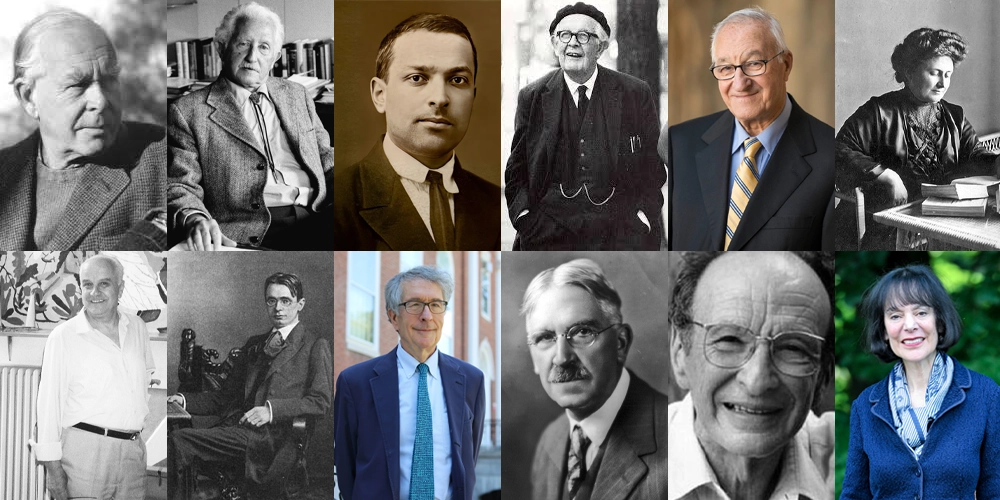
What Are Child Development Theories?
Child Development Theories are the ideas, explanations, and models that help us understand how children change as they grow. These theories explain everything from how a baby begins to think to how a five-year-old learns to make friends, solve problems, or express emotions.
Think of them as a map of childhood development. They don’t predict precisely what every child will do, but they give us a framework for what’s typical at different ages and stages. This is especially important in early education, where young children’s minds and emotions develop rapidly and often unpredictably.
Some theories focus on how children learn through play and exploration, while others explain how they develop emotionally through relationships or mentally through thought processes. Behavioral child development theories explain how rewards, routines, and feedback shape children’s actions. Others, like sociocultural theory in child development, examine how culture, language, and social interaction shape learning.
A good way to understand these theories is to see them as lenses. Each theory offers a different lens through which we can observe and support a child. No single theory explains everything, but they help teachers, parents, and caregivers make more informed choices.
Let’s take a quick look at some examples to make this more straightforward:
- Like Freud’s, a psychodynamic theory of child development emphasizes internal emotions and unconscious desires, showing us how early experiences can shape personality.
- Information processing theory in child development helps explain how young children take in new information, make sense of it, and use it again—like remembering a new word or solving a puzzle.
- Attachment theory in child development focuses on emotional safety. When children feel secure, they explore more, learn better, and build stronger relationships.
- Behavioral theories of child development, including those by Bandura, look at how children learn by watching others or through reinforcement.
- And some theories, like the maturationist theory of child development, remind us that specific abilities unfold naturally, no matter how much we teach or practice—like crawling, walking, or talking.
One crucial point: Child Development Theories are not rigid rules. They don’t tell us what every child must do at a certain age. Instead, they offer patterns, expectations, and insights. They help us notice when a child needs extra support or shows advanced abilities in certain areas.
These theories also vary in focus. Some zero in on:
- Cognitive development (how children think and reason)
- Emotional development (how they feel and regulate emotions)
- Social development (how they relate to others)
- Language development (how they communicate and understand speech)
- Moral development (how they learn right from wrong)
Because early childhood is such a fast-changing time, Child Development Theories give educators a foundation for building better learning environments. From choosing teaching tools to setting up classroom spaces, these theories turn guesswork into intentional, thoughtful decisions.
In essence, these theories are not just for academics or researchers. They’re for every adult who plays a role in helping a child grow—whether you’re designing curriculum, choosing preschool furniture, or simply deciding what books to read before naptime.
A Historical Overview of Child Development Theories
The idea that children go through different stages of growth is not new, but how we explain it has changed a lot over time. To understand how modern Child Development Theories came to be, it helps to take a quick look at where they started.
Centuries ago, children were often seen as “mini adults.” Their behavior wasn’t studied carefully, and adults assumed they thought and felt like grown-ups—just smaller. That began to change in the 1600s, when philosophers like John Locke and Jean-Jacques Rousseau asked essential questions: What makes children unique? Do they learn everything from experience? Are they born with certain traits?
John Locke’s theory of child development introduced the idea of the child as a “blank slate.” He believed that children are shaped entirely by their environment and experiences. In his view, education and upbringing were everything. This laid the foundation for later behavioral child development theories, focusing on how children learn through reinforcement and repetition.
On the other hand, Jean-Jacques Rousseau’s child development theory saw children as naturally good and full of potential. He believed children develop in stages and that adults should respect their timing instead of forcing early learning. His thinking inspired more modern approaches that value play-based learning, emotional safety, and developmental readiness.
Moving into the 19th and 20th centuries, child psychology began to take shape as a serious field. Thinkers like Sigmund Freud, known for the psychodynamic theory of child development, introduced ideas about unconscious feelings and early emotional experiences. Freud’s theory sparked decades of research into how childhood affects adulthood—even if some of his ideas are debated today.
By the early 1900s, more structured theories began to emerge. Researchers like Jean Piaget observed how children solve problems and reason through tasks. His child development theory introduced the idea that children think differently from adults, not less, just differently. Around the same time, Lev Vygotsky’s theory of child development explored how social interaction and culture play a significant role in learning.
These early theorists paved the way for a wide range of perspectives. Over time, new names joined the conversation—like Erik Erikson, Maria Montessori, Albert Bandura, and many others—each adding their piece to the puzzle. Some focused on emotional growth, others on language, social skills, or moral reasoning.
In recent years, theorists such as Howard Gardner, John Dewey, Bronfenbrenner, and Carol Dweck introduced concepts like multiple intelligences, learning through experience, ecological systems, and growth mindset. These ideas continue to shape how early childhood programs are designed today.
As you can see, child development theories don’t come from one person or period. They’ve grown through centuries of observation, research, and reflection. Each theory builds on or responds to the ones before it, creating a rich field of knowledge that helps us better support children.
When educators or parents understand the history behind these ideas, they’re more likely to see the value in applying them—and less likely to fall into “one-size-fits-all” thinking. After all, children have always developed in complex, fascinating ways. Our understanding keeps getting better.
| Theorist | Active Period | Theory Name | Key Concept Summary |
|---|---|---|---|
| John Locke | 1600s | Blank Slate Theory | Children are shaped entirely by their environment and experiences. |
| Jean-Jacques Rousseau | 1700s | Developmental Readiness | Children grow in natural stages and should be allowed to develop at their own pace. |
| Sigmund Freud | Late 1800s – Early 1900s | Psychodynamic Theory | Early experiences and emotional development shape future behavior. |
| Jean Piaget | 1920s – 1980s | Cognitive Development Theory | Children’s thinking develops in stages and is different from adult thinking. |
| Lev Vygotsky | 1920s – 1930s | Sociocultural Theory | Learning is shaped by social interaction and cultural tools. |
| Maria Montessori | Early 1900s | Montessori Method | Children learn best through freedom within a structured, prepared environment. |
| John Dewey | Late 1800s – Mid-1900s | Progressive Education Theory | Education should be based on real-life experiences and active learning. |
| Erik Erikson | Mid-1900s | Psychosocial Development Theory | Social and emotional stages influence identity and self-confidence. |
| Albert Bandura | 1960s onward | Social Learning Theory | Children learn by watching and imitating others. |
| Howard Gardner | 1980s onward | Multiple Intelligences Theory | Intelligence is not one-size-fits-all; there are many ways to be smart. |
| Bronfenbrenner | 1970s – 1990s | Ecological Systems Theory | A child’s development is affected by multiple layers of surrounding environments. |
| Carol Dweck | 2000s – present | Growth Mindset Theory | Children can improve and grow through effort, not just natural talent. |
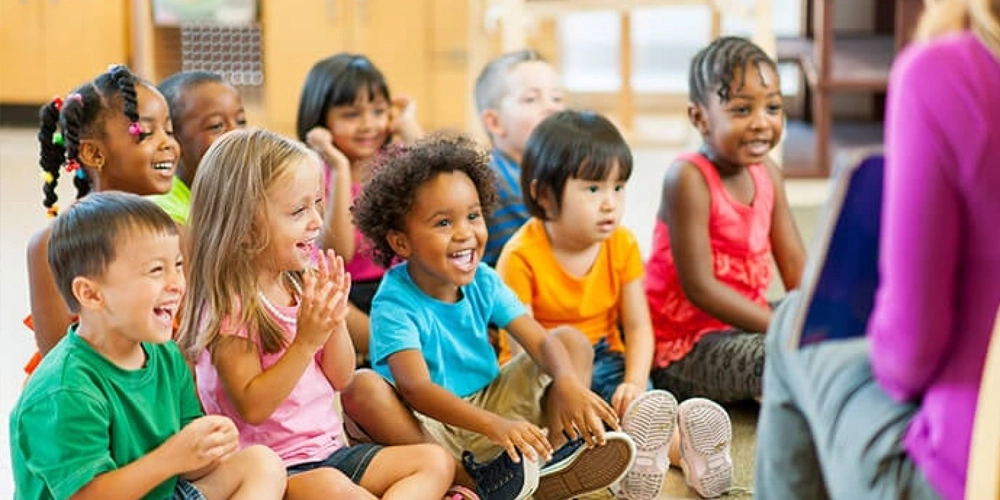
The Importance of Child Development Theories in Early Childhood Settings
Understanding Child Development Theories is not just about knowing names or stages. It’s about how these ideas influence real decisions in real classrooms. In early education, theory meets practice every single day. To see the actual value of these theories, let’s explore how they shape the roles of teachers, school leaders, and even parents—and how they guide how we build early learning environments.
Why These Theories Matter in Preschool Environments
In the fast-changing world of early childhood, one-size-fits-all approaches don’t work. Every child learns at a different pace, differently, and responds to the world in their unique style. Child Development Theories are valuable—they give us a deeper understanding of what’s happening inside a child’s mind, body, and emotions.
These theories provide insight into how children learn, express emotions, and build relationships. In preschool settings, that knowledge turns into action, impacting everything from classroom design to teacher interaction.
How Teachers Use Theories in Day-to-Day Practice
For preschool teachers, these theories are like a compass. They don’t tell you what to do, but they help you understand why a child behaves a certain way—and what they might need next.
Let’s say you’re teaching a group of three-year-olds. If you understand Jean Piaget’s child development theory, you’ll know they’re in the preoperational stage. That means they think in images, not logic. You wouldn’t expect them to understand abstract rules, but you would give them props for pretend play, visual aids, and simple, hands-on tasks.
Or consider Vygotsky’s child development theory—a teacher aware of this theory would actively guide peer interaction, ask open-ended questions, and support children beyond their current abilities, inside what Vygotsky called the “zone of proximal development.”
How Theories Guide School Directors and Curriculum Planners
At a higher level, child development theorists and their theories influence decisions about classroom layouts, teaching materials, and even teacher training.
- Based on social learning theory, a director might select toys that encourage cooperation.
- Curriculum writers may design programs that follow children’s natural development, inspired by maturationist theory.
- Designers of Montessori classrooms often use these ideas to build child-sized furniture, open-ended learning centers, and accessible storage—all rooted in development theory.
Even classroom schedules can reflect these theories. For example, children need movement, rest, sensory input, and social play—all of which align with multiple theories of child development and learning.
Why Parents Should Understand These Theories Too
These ideas aren’t just for educators. Parents also benefit from knowing what’s developmentally appropriate. When you understand different theories of child development, you stop comparing your child to others—and start noticing their natural pace.
Instead of worrying that your child isn’t “advanced,” you start asking, “Is this behavior normal for this stage?” You become more patient, more responsive, and better able to support growth at home.
Whether it’s attachment theory, behavioral theory, or even information processing theory, these frameworks help parents see their children’s actions in context—not as problems but as developmental signals.
A Foundation for Intentional Early Learning
Child Development Theories aren’t just abstract ideas. They are tools. They help us make more intelligent choices about teaching, caring for, and designing for young children.
Whether you’re choosing the right toy, organizing a preschool space, or simply talking to a toddler in meltdown mode, understanding the theory behind the behavior helps you respond—not react.
And that’s the difference between “just surviving” in early education and supporting development with purpose.
The 5 Major Theoretical Perspectives in Early Childhood Development
Child Development Theories can feel like a web of names and terms—so let’s simplify it by grouping them into five main perspectives. These perspectives don’t compete; they enrich each other and guide us in understanding how children grow, learn, and interact. Here’s how they help shape real-world decisions in early learning settings:
- Maturationist Perspective: This approach sees development as unfolding naturally over time. The maturationist theory of child development suggests that children acquire key skills—like crawling, walking, or talking—when their bodies and brains are ready, not because of extra teaching or pressure. In classrooms, this means creating supportive environments rather than rushing milestones.
- Behavioral Perspective: Child development theories teach us that children’s actions are shaped through repetition, rewards, and responses. According to behaviorism, behaviors followed by positive outcomes will likely happen again. Teachers use this by encouraging routines, modeling sharing, and praising effort. Over time, classrooms become spaces where good habits grow naturally.
- Psychodynamic (Emotional) Perspective: Rooted in ideas like Freud’s, this viewpoint emphasizes emotions, early relationships, and inner motivations. The psychodynamic theory of child development shows how early emotional experiences help shape lifelong behaviors. Understanding these theories in early education reminds teachers to respond gently to a child’s feelings and build trust before expecting independence.
- Cognitive/Constructivist Perspective: Children are seen as little explorers building their constructivist understanding. Different theories of child development—like constructivist models—focus on how children construct knowledge through hands-on experience. Playtime, discovery corners, and open-ended materials become powerful tools when guided by this perspective.
- Sociocultural Perspective: The sociocultural theory of child development highlights learning through interaction and culture. Children absorb language, behavior, and how to think by watching and talking with others. This perspective is used when educators plan partner activities, group projects, and culturally relevant teaching materials that reflect a child’s world.
| Perspective | What It Focuses On | Classroom Application |
|---|---|---|
| Maturationist | Biological growth and timing | Patience, wait for readiness, use developmentally appropriate tasks |
| Behavioral | Actions shaped by reward and repetition | Consistent routines, positive reinforcement, modeling |
| Psychodynamic | Emotion and early attachment | Consistent routines, positive reinforcement, and modeling |
| Constructivist | Active exploration and understanding | Hands-on learning, open-ended play, guiding discovery |
| Sociocultural | Social interaction and cultural context | Group activities, peer learning, language-rich and collaborative spaces |
These five major perspectives help us understand how children grow, learn, socialize, and emotionally develop. Together, they form a complete set of tools drawn from Child Development Theories, letting educators, parents, and school leaders design experiences that truly match children’s needs.
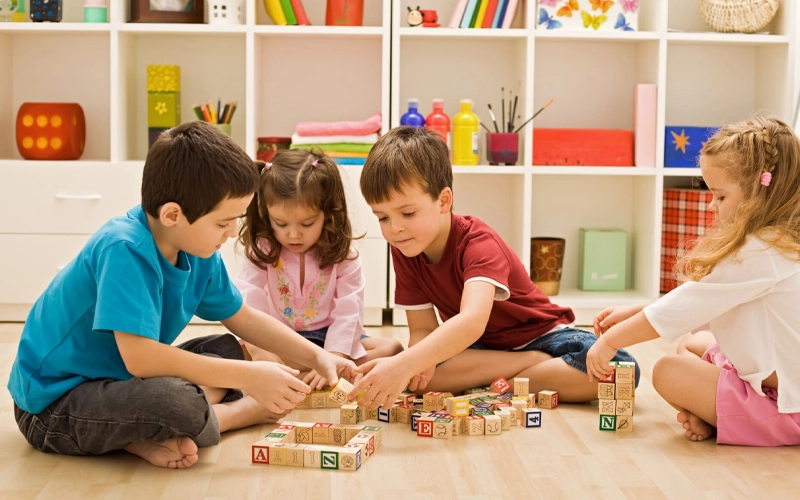
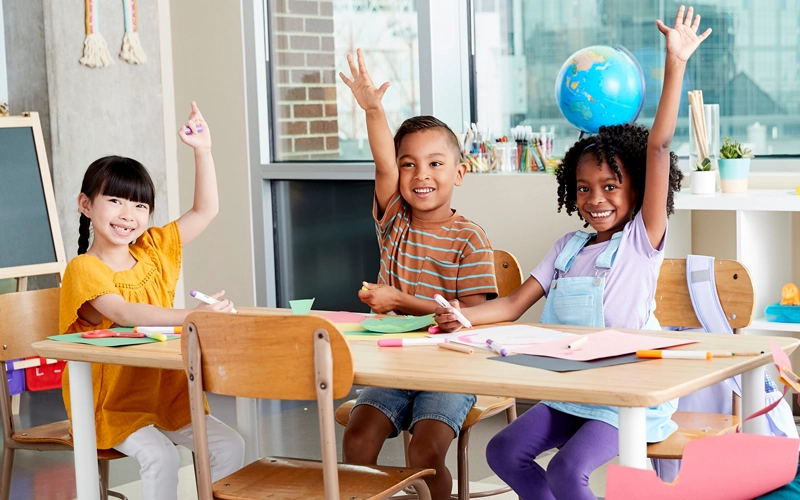
8 Key Theories of Child Development
Child Development Theories help educators and parents understand how children think, feel, and grow—especially in the early years. In this section, we’ll explore 7 major theories that continue to influence preschool education today. Each one offers a different angle on development, but all support a deeper connection between teaching and how children truly learn.
Bowlby’s Attachment Theory
John Bowlby emphasized that secure emotional bonds in early childhood form the foundation for healthy social and emotional development. When children feel safe and connected to a caregiver, they’re more confident about exploring and engaging. This theory supports routines, emotional safety, and strong relationships between teachers and children in preschool settings.
👉 Learn more about Attachment Theory in Early Childhood.
Erik Erikson’s Stages of Development
Erikson’s psychosocial theory breaks development into eight stages. In the early years, children navigate key challenges like trust vs. mistrust and autonomy vs. shame. Understanding these stages helps educators support emotional resilience and independence through consistent care and positive guidance.
👉 Read the full article on Erikson’s Child Development Theory.
Lev Vygotsky’s Sociocultural Theory
Vygotsky believed that learning is profoundly social. Children develop language, problem-solving skills, and cultural awareness through interaction with peers and adults. Concepts like the “zone of proximal development” show how guided play and adult support lead to stronger learning outcomes.
👉 Explore how Vygotsky’s Theory shapes early education.
Piaget’s Theory of Cognitive Development
Jean Piaget saw children as little scientists who construct knowledge through exploration. His four-stage theory helps educators understand how children’s thinking evolves. In preschool, this means providing hands-on activities that match each child’s thinking stage, like sorting, pretend play, and simple experiments.
👉 Read more on Piaget’s Theory of Cognitive Development.
Albert Bandura’s Social Learning Theory
Albert Bandura explained that children learn not only through direct experience but also by watching others. In early childhood, observing and imitating role models—such as teachers, parents, and peers—helps children develop positive behaviors, language, and social skills. This theory highlights the power of modeling in shaping preschool learning environments.
👉 Learn more about Applying Social Learning Theory in Early Childhood.
Educazione Montessori
Maria Montessori developed a whole approach based on her observations of how children learn naturally. She emphasized independence, sensory exploration, and freedom within structure. Classrooms based on her theory include self-correcting materials, child-sized tools, and quiet, focused work areas.
👉 Discover how Montessori’s Child Development Theory applies in practice.
Approccio di Reggio Emilia
Founded by Loris Malaguzzi, this philosophy views children as capable, curious, and full of potential. It emphasizes creativity, collaboration, and expression through many “languages”—art, music, movement, and more. In Reggio-inspired classrooms, the learning environment itself becomes a teacher.
👉 Learn more about the Reggio Emilia Approach in child development.
Metodo di insegnamento Waldorf
Based on Rudolf Steiner’s ideas, the Waldorf method nurtures the head, heart, and hands. It values rhythm, storytelling, imagination, and delayed academics in early childhood. Children learn through creative play, daily routines, and deep connections with nature and art.
👉 Explore how Waldorf’s Teaching Philosophy supports child development.
Each of these Child Development Theories adds a vital piece to the puzzle. They influence how classrooms are set up, teachers respond to children, and learning unfolds. Whether through relationships, discovery, routine, or play, these theories give us a roadmap to support every child with intention and care.
Other Emerging Theories Worth Exploring
When discussing Child Development Theories, most people immediately consider the classics—Piaget’s stages, Vygotsky’s sociocultural approach, or Erikson’s psychosocial stages. These theories have shaped education for decades and continue to guide how early learning environments are built.
But development doesn’t stop with the big names. Over the past century, other influential thinkers have added new insights that make early education more holistic, practical, and relevant to modern classrooms. These perspectives may not always be the textbook headline theories, but they give teachers and parents fresh ways to understand children’s growth.
In this section, we’ll look at five critical theories that are often included in broader discussions of theories of child development and learning: Bandura’s Social Learning Theory, Gardner’s Multiple Intelligences, Dewey’s Progressive Education, Bronfenbrenner’s Ecological Systems Theory, and Dweck’s Growth Mindset. Together, they enrich our understanding of how children think, interact, and build resilience in preschool.
Howard Gardner’s Multiple Intelligences Theory
People often picture test scores or verbal skills when talking about intelligence. Howard Gardner challenged this narrow view by proposing that intelligence is not a single measure but a collection of unique abilities. His perspective broadened the field of Child Development Theories, shifting the focus from “how smart is this child?” to “how is this child smart?” This redefinition remains powerful in preschool education, where children show strengths in music, art, movement, and relationships long before traditional academics.
- The Core Idea of Multiple Intelligences
Gardner’s theory suggests that children may excel in different areas, such as linguistic, logical-mathematical, bodily-kinesthetic, spatial, musical, interpersonal, intrapersonal, and naturalistic intelligence. Recognizing these diverse abilities prevents educators from labeling children as “slow” or “gifted” based solely on one skill. In Howard Gardner’s child development theory, every child has the potential to shine if given the right opportunities.
- Applications in Preschool Education
This theory has reshaped early learning environments. For example, a child who struggles with worksheets might thrive in music, dance, or building blocks. Using Gardner’s theory of child development approach, teachers design varied activities—storytelling corners, rhythm games, outdoor exploration—that allow all types of intelligences to flourish. This makes classrooms more inclusive and engaging, reflecting the diversity of children’s learning styles.
Why It Matters in Early Years
Preschool is often a child’s first structured learning experience. By applying this child development theory, teachers avoid the trap of one-size-fits-all education. Instead, they encourage curiosity across multiple domains. A child fascinated by nature might lead a group in outdoor observation, while another with interpersonal intelligence thrives in collaborative play. In this way, Child Development Theories like Gardner’s support whole-child growth.
Connections with Other Child Development Theories
While Piaget explained stages of thinking and Vygotsky stressed social interaction, Gardner added that intelligence has many forms. His child development theory complements others by reminding educators that strengths are diverse. Together, these theories of child development and learning build a more complete understanding of preschool education, ensuring no child’s potential is overlooked.
John Dewey’s Progressive Education Theory
John Dewey was a philosopher and one of the most influential voices in modern education. His ideas reshaped how teachers think about children and learning environments. While earlier Child Development Theories often emphasized internal growth stages or behavior, Dewey highlighted the role of real-life experience. He believed children learn best when education connects directly to their daily lives, encouraging curiosity, exploration, and problem-solving. This philosophy is especially relevant in preschool education, where play and discovery dominate the learning process.
- Learning by Doing: At the heart of John Dewey’s child development theory is that children learn through active participation. Rather than passively listening, they should explore, experiment, and ask questions. In early education, this means hands-on projects—building with blocks, planting seeds, or exploring nature—become central tools for development. Dewey believed these experiences prepare children academically, socially, and emotionally.
- Education as Social Experience: Dewey emphasized that learning is a profoundly social process. This John Dewey theory child development perspective views classrooms as miniature communities where children learn cooperation, communication, and responsibility. Group activities such as collaborative art projects or role-play games allow children to practice democratic values—listening, sharing, and respecting others’ voices.
- Practical Applications in Preschool: Dewey’s ideas appear in activity-based curricula and project-based learning in preschool settings. Teachers guide children to explore topics that interest them—dinosaurs, weather, family traditions—while weaving in literacy, math, and social skills. This approach reflects Dewey’s theory of child development, which rejects rigid instruction in favor of flexible, child-centered experiences. It aligns well with Child Development Theories, such as Vygotsky’s sociocultural theory and Piaget’s constructivist ideas.
Why Dewey Still Matters Today
In a world where children are often pushed toward early academics, Dewey’s voice remains a reminder of balance. His child development theory supports classrooms encouraging creativity, play, and collaboration. For educators, this means valuing children’s questions as much as answers and building learning environments that mirror real-world experiences. With other theories of child development and learning, Dewey’s progressive education continues to guide preschool practices worldwide.
Bronfenbrenner’s Ecological Systems Theory
Urie Bronfenbrenner offered a unique perspective that set his work apart from other Child Development Theories. Instead of focusing solely on a child’s inner development or immediate learning, he emphasized the environments in which children grow. His ecological systems theory child development framework explained that a child is shaped not just by family, but also by schools, communities, and larger cultural forces. This model gives educators and parents a wider lens to understand children’s growth in preschool years.
- The Five Environmental Systems: Bronfenbrenner described development as happening within five layers: the microsystem (family, school, peers), mesosystem (connections between settings), exosystem (indirect influences like parents’ workplaces), macrosystem (cultural values and norms), and chronosystem (changes over time). In this Bronfenbrenner child development theory, every layer influences the child, either directly or indirectly. For example, a supportive family and a nurturing preschool create stronger foundations than one alone.
- Why Context Matters in Child Development: Unlike some earlier Child Development Theories, Bronfenbrenner’s work reminds us that children never grow in isolation. A preschooler’s emotional security may depend not just on their teacher, but also on community support and cultural attitudes toward education. This helps educators recognize why two children with similar abilities may show different progress—because their surrounding environments differ.
Applications in Early Childhood Education
Teachers can apply Bronfenbrenner’s model by looking beyond the classroom. For example, building partnerships with parents strengthens the microsystem, while involving community resources—like libraries or cultural centers—connects children to broader opportunities. By acknowledging the multiple systems at play, educators design learning environments that reflect real life, making this theory a valuable part of child development and learning theories.
Relevance in Today’s World
Modern challenges, such as technology, diverse family structures, and global cultural shifts, make Bronfenbrenner’s perspective even more relevant. His theory of child development highlights why policies, communities, and even media affect preschool children as much as teachers do. Among all Child Development Theories, this ecological view ensures educators never overlook the broader systems shaping a child’s growth.
Carol Dweck’s Growth Mindset Theory
Carol Dweck introduced one of the most practical ideas in modern psychology: the concept of mindset. Her work showed that children’s beliefs about learning and intelligence directly affect how they approach challenges. Unlike some Child Development Theories that focus mainly on stages or environments, Dweck’s perspective emphasizes attitude and self-belief. This makes her ideas especially powerful in preschool, where children are just beginning to build their sense of self as learners.
- Fixed Mindset vs. Growth Mindset: The contrast between the two mindsets is at the heart of Dweck’s child development theory. A fixed mindset assumes abilities are static—“I can’t draw” or “I’m bad at numbers.” A growth mindset, by contrast, views abilities as flexible, improved through effort and practice. In preschool settings, teaching children to say “I can try again” instead of “I can’t” lays a foundation for resilience and lifelong learning.
- Encouraging Effort in Early Years: This growth mindset child development approach enables teachers and parents to praise effort, strategy, and persistence, rather than only results. For example, instead of saying “You’re so smart,” a teacher might say, “I like how you kept trying with that puzzle.” These small shifts help children associate learning with effort and discovery, not fear of failure.
Practical Applications in Preschool Classrooms
Preschool teachers can apply this theory by designing activities that allow multiple attempts, experimentation, and reflection. Building blocks that collapse, drawings that improve with practice, or songs sung with growing confidence all reinforce a growth mindset. Dweck’s provides one of the clearest guides for daily feedback, routines, and classroom culture among the many Child Development Theories.
Connections to Other Child Development Theories
Dweck’s model complements the broader theories of child development and learning by showing that how children think about learning matters as much as what they know. With Piaget’s focus on cognitive stages, Vygotsky’s social context, and Bandura’s modeling, Dweck’s growth mindset completes the picture by adding motivation and belief as key development drivers.
Why It Matters Today
Teaching a growth mindset offers resilience in today’s world, where children face increasing academic and social pressures. This development theory helps children see challenges as opportunities and mistakes as part of learning. By nurturing this perspective early, educators give children a lifelong gift: the confidence to keep trying, no matter the obstacle.
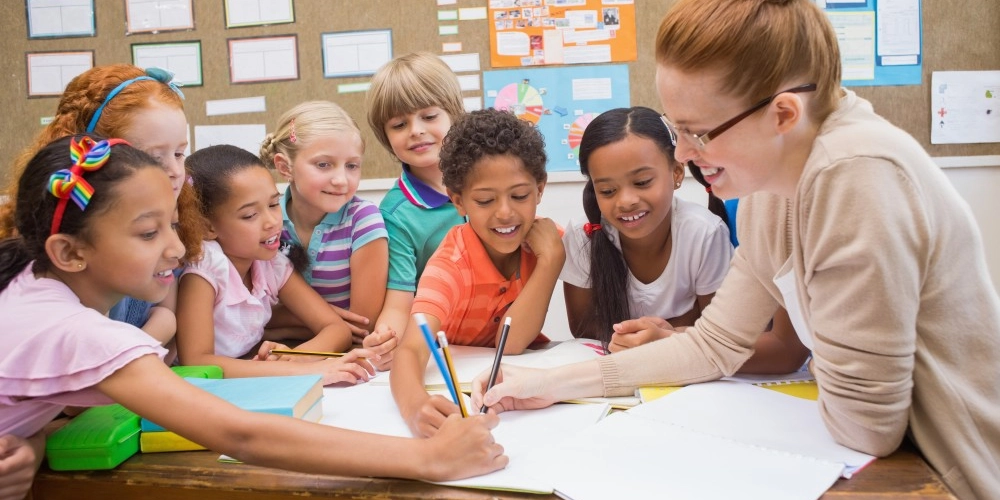
Different Theories of Child Development
When we discuss different Child Development Theories, we examine how each emphasizes a unique aspect of children’s growth. Some focus on emotional needs, others on social interaction, and still others on stages of thinking or motivation. By comparing these perspectives, educators gain a clearer picture of how to support preschoolers in a balanced way.
| Theory / Theorist | Core Focus | Educational Implication in Preschool |
|---|---|---|
| Sigmund Freud – Psychodynamic Theory | Early emotional experiences and unconscious drives | Reminds teachers that children’s behavior may reflect inner feelings |
| John Bowlby – Attachment Theory | Secure bonds with caregivers | Strong relationships help children feel safe to explore |
| Jean Piaget – Cognitive Development Theory | Stages of reasoning and symbolic play | Activities should match the preoperational stage of preschoolers |
| Lev Vygotsky – Sociocultural Theory | Learning through social interaction | Teachers scaffold new skills with guided play and dialogue |
| Erik Erikson – Psychosocial Development | Building autonomy and initiative | Preschool years are for fostering confidence and responsibility |
| Albert Bandura – Social Learning Theory | Observation and imitation of role models | Teachers’ and peers’ actions shape social skills |
| Howard Gardner – Multiple Intelligences | Diverse forms of intelligence | Varied activities (music, art, movement) meet all children’s strengths |
| John Dewey – Progressive Education | Learning by doing | Hands-on projects and real-life experiences drive learning |
| Maria Montessori – Montessori Method | Independence and prepared environments | Child-sized furniture and self-directed activities encourage autonomy |
| Reggio Emilia – Malaguzzi | Creativity and collaboration | The environment acts as a “third teacher” through open exploration |
| Rudolf Steiner – Waldorf Education | Imagination and rhythm | Storytelling and play nurture both emotion and intellect |
| Urie Bronfenbrenner – Ecological Systems | Multiple layers of environment | Family, school, and community together influence preschool growth |
| Carol Dweck – Growth Mindset | Beliefs about effort and ability | Praise effort, not just results, to build resilience |
| Abraham Maslow – Hierarchy of Needs | From basic needs to self-actualization | Children must feel safe and loved before learning effectively |
| John Locke – Tabula Rasa | Children shaped by experience | Early environments and teaching strongly influence development |
| Jean-Jacques Rousseau – Natural Development | Child-led readiness and nature | Education should respect each child’s natural pace |
| Donald Winnicott – Play and Attachment | Transitional objects and secure space | Play and comfort items support emotional security |
| Theory-Theory of Child Development | Children as little scientists | Preschoolers test ideas through play and exploration |
These different Child Development Theories do not cancel each other out; instead, they highlight the many dimensions of growth—emotional, cognitive, social, and environmental. For preschool educators, the key is not choosing one theory over another, but combining insights to create safe, engaging, and developmentally rich classrooms.
Conclusione
All these Child Development Theories remind us of one simple truth: children learn and grow in many ways. Some theories focus on cognitive growth, like Piaget; others highlight social interaction, like Vygotsky and Bandura; newer perspectives, such as Dweck’s growth mindset, remind us that attitude and environment also shape development. Taken together, these theories of child development and learning provide a broad map that helps teachers and parents better understand the needs of young children.
For educators, this means planning activities that balance play, structure, and exploration. For parents, it means recognizing that learning happens at a desk and while playing, asking questions, making mistakes, and trying again. Each child development theory adds a piece of the puzzle, showing us that there is no single “right” way to support growth. Instead, children benefit most when combining different ideas to create supportive, nurturing environments.
In preschool education, theories are not just abstract concepts; they shape the design of classrooms, the choice of toys, and the role of teachers. A Montessori-inspired classroom may have open shelves with self-directed learning materials, while a Reggio Emilia environment encourages creativity with art and collaboration. Even furniture choices matter—child-sized tables, flexible play areas, and safe, durable toys all reflect the influence of Child Development Theories in action.
As a supplier of kindergarten furniture and educational toys, we aim to help schools and teachers put these theories into practice. By providing learning tools that encourage exploration, creativity, and cooperation, we turn theory into authentic experiences children can touch, build, and enjoy. In this way, the ideas of Piaget, Vygotsky, Erikson, and many others live on—not just in books, but in the daily lives of children who are growing, learning, and preparing for the future.
Domande frequenti
What are the major Child Development Theories teachers use in preschool?
Explains that theories like Piaget, Vygotsky, Erikson, Montessori, Reggio Emilia, Bowlby, and Waldorf guide young children’s cognitive, social, emotional, and environmental growth.
Why are Child Development Theories critical in early childhood education?
This paper clarifies how these theories help educators design age-appropriate learning activities, organize safe and stimulating environments, and support emotional development through informed teaching choices.
How does “learning by doing” fit into Child Development Theories?
Theories such as Dewey’s Progressive Education and Montessori’s approach highlight the crucial role of hands-on exploration and experiential learning in preschool development.
How does observational learning influence young children?
Bandura’s Social Learning Theory states that children learn behaviors and attitudes by watching others, underscoring the importance of positive role modeling in preschool.
What does Growth Mindset mean in the context of early childhood development?
This article explains Carol Dweck’s concept, in which praising effort and strategies over results encourages resilience and a love of learning from a young age.
How do Child Development Theories affect preschool environment design?
Explains how theories influence furniture, toy selection, and classroom setup—e.g., child-sized materials in Montessori, expressive art spaces in Reggio Emilia, or secure bases in Attachment Theory.
